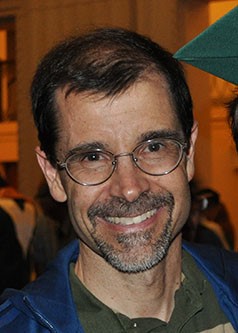Science and Mathematics
The Hellings and Downs correlation curve: Why it’s so important for pulsar timing array searches for gravitational waves
October 11, 2023 at 11:00am – 12:00pm EDT
Physics Building, 202
This event has already occurred. The information may no longer be valid.

The Department of Physics is pleased to welcome Joseph Romano for a presentation as part of the Gravitational Waves Seminar Series. Romano is a Professor and Director of the Institute of Space Sciences at the University of Texas Rio Grande Valley. His primary research interest is gravitational-wave data analysis, specializing in searches for stochastic gravitational-wave backgrounds using data from ground-based and space-based interferometers and pulsar timing arrays. He was co-chair of the LIGO Scientific Collaboration Stochastic Sources Analysis Group from 2000-2006 and 2018-2020. His prior research experience includes fundamental problems in classical and quantum gravity.
Abstract:
By precisely monitoring the “ticks” of Nature’s most precise “clocks” (pulsars), astronomers have recently reported evidence for a background “hum” of low-frequency gravitational waves (GWs). A possible source for this observed signal is the combination of GWs produced by hundreds of thousands of pairs of super-massive black holes orbiting one another in the centers of merging galaxies. In this talk, I will describe these observations, paying specific attention to the Hellings and Downs correlation curve—the “smoking gun” signature that the signal was of GW origin. For reference, I will make comparisons to the more familiar detections of GWs made by the LIGO and Virgo detectors over the past 8 years.
This event was published on October 10, 2023.
Event Details
- Category
- Science and Mathematics
- Type
- Talks
- Region
- Campus
- Open to
- Campus Community
- Organizer
- CAS-Department of Physics
- Contact
- Kevin Garvey
kjgarvey@syr.edu
315-443-5960
- Accessibility
- Contact Kevin Garvey to request accommodations
